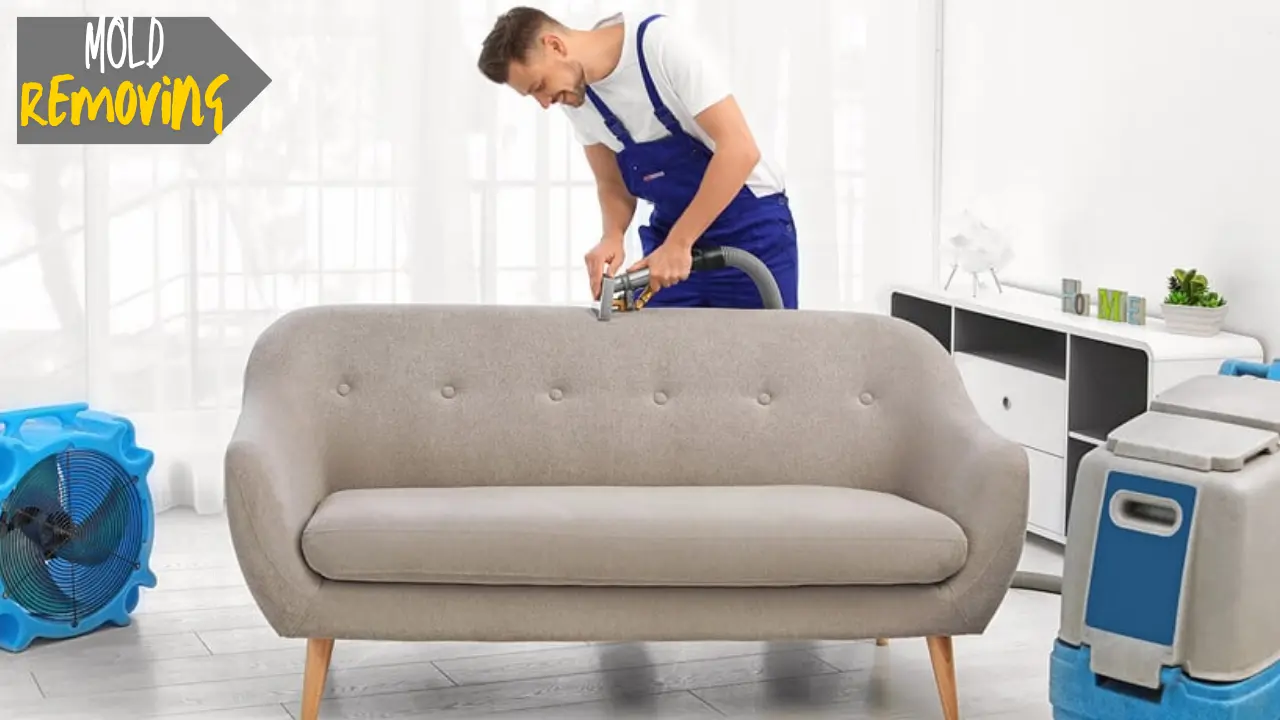Mold growth on fabric furniture can be a distressing sight and often prompts immediate action to eliminate it. However, traditional methods involving bleach may not always be the best solution due to various reasons.
In this article, we’ll discuss effective ways to tackle mold on fabric furniture without resorting to bleach, ensuring both cleanliness and safety.
Intro
Fabric furniture provides a cozy and comfortable seating option in our homes, but it is also susceptible to mold growth, especially in damp and humid environments. Mold thrives in moisture-rich conditions, making fabric furniture an ideal breeding ground if not properly maintained.
Risks of Mold and Mildew
Mold and mildew not only compromise the appearance of fabric furniture but also pose health risks. Inhalation of mold spores can trigger allergic reactions and respiratory issues, particularly in individuals with pre-existing conditions.
Drawbacks of Using Bleach for Mold Removal
While bleach is a common household cleaner and disinfectant, it may not be the most suitable option for removing mold from fabric furniture. Bleach can damage the fabric fibers, cause discoloration, and emit harsh fumes, making it less than ideal for delicate upholstery.
Other Methods for Removing Mold from Fabric Furniture
- Vinegar and Baking Soda Solution
A mixture of white vinegar and baking soda is a natural and effective remedy for mold removal. Vinegar’s acidic properties help kill mold spores, while baking soda acts as a mild abrasive to scrub away stains.
- Hydrogen Peroxide Solution
Hydrogen peroxide is another safe and eco-friendly option for combating mold. It has strong antifungal properties and can penetrate deep into fabric fibers to eliminate mold growth effectively.
- Tea Tree Oil
Tea tree oil is renowned for its antimicrobial properties, making it a valuable asset in mold remediation. Diluted tea tree oil can be applied to fabric furniture to inhibit mold growth and neutralize musty odors.
- Sunlight Exposure
Sunlight is a natural enemy of mold and mildew. Exposing fabric furniture to direct sunlight can help dry out moisture and kill mold spores. Place the furniture outdoors on a sunny day for maximum effect.

Step-by-Step Guide for Removing
- Preparation: Remove any cushions or removable covers from the fabric furniture and vacuum the surface to remove loose mold spores.
- Application of Chosen Solution: Prepare the selected mold removal solution (vinegar and baking soda, hydrogen peroxide, or tea tree oil) according to instructions.
- Scrubbing and Cleaning: Apply the solution generously to the affected areas and use a soft-bristled brush to gently scrub away mold stains.
- Drying Process: Allow the furniture to air dry in a well-ventilated area or under direct sunlight. Ensure thorough drying to prevent mold recurrence.
Preventive Measures to Avoid Mold Growth
- Maintain optimal indoor humidity levels.
- Use a dehumidifier in damp areas.
- Clean spills and stains promptly.
- Regularly vacuum and air out fabric furniture.
- Apply a mold-resistant fabric spray as a preventive measure.
Conclusion
Removing mold from fabric furniture without bleach is not only possible but also preferable for preserving the integrity of the upholstery. By utilizing natural and safe alternatives, you can effectively eliminate mold while ensuring the longevity of your furniture.
FAQs:
- Can I use bleach to remove mold from fabric furniture?
- Bleach is not recommended for removing mold from fabric furniture as it can damage the fabric and emit harmful fumes.
- How often should I clean my fabric furniture to prevent mold growth?
- It’s advisable to clean fabric furniture regularly and address spills and stains promptly to prevent mold growth.
- Is sunlight exposure an effective method for mold removal?
- Yes, exposing fabric furniture to sunlight can help kill mold spores and dry out moisture, reducing the risk of mold growth.
- Can I use essential oils for mold removal on fabric furniture?
- Certain essential oils, such as tea tree oil, have antimicrobial properties and can be effective for mold removal when diluted and applied properly.
- What should I do if mold growth persists despite cleaning efforts?
- If mold growth persists, consider seeking professional mold remediation services to address the issue comprehensively.


